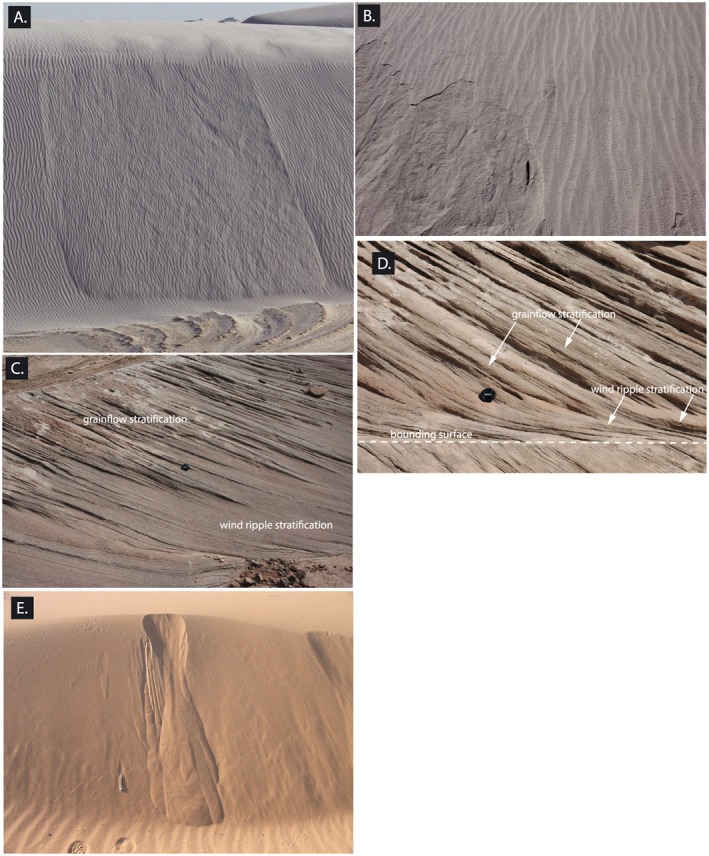Figure 16.

Modern and ancient eolian dune sedimentary structures on Earth. (a) Impact ripples overprinting grainflows at White Sands Dune Field, New Mexico, USA. (b) Impact ripples overprinting grainflows where the ripples have fractured because of the underlying grainflow relaxed to a lower angle at White Sands Dune Field, New Mexico, USA. (c and d) Eolian cross stratification in the Cedar Mesa Sandstone in southern Utah, USA. Grainflow stratification intercalated with wind ripple stratification. The grainflows stand out of the outcrop as “dagger‐like” wedges (Figure 16c). The wind ripple stratification has a finer texture and makes up the majority of the base of the image. Grainflow stratification downlapping onto wind ripple stratification at the base of a set of stratification in the Cedar Mesa Sandstone, southern Utah, USA (Figure 16d). Note that the wind ripple stratification, which occupies the lower few centimeters of the image, makes up a small portion of the dune set in this location. (e) A typical grainflow on a sand dune at the Gran Desierto, Mexico. Note the hourglass shape with the scarp at the dune crest and the lobate toe. Note also the along‐slope migrating impact ripples that make up the basal apron of the dune.
